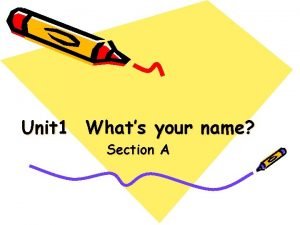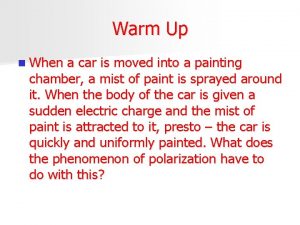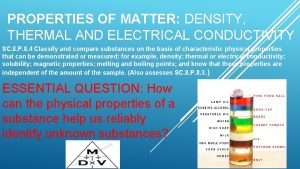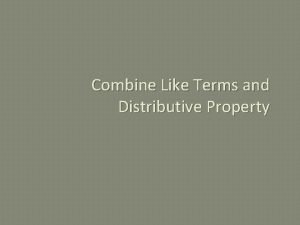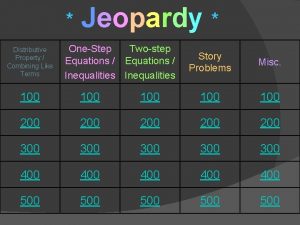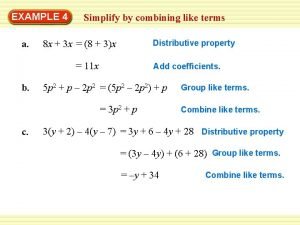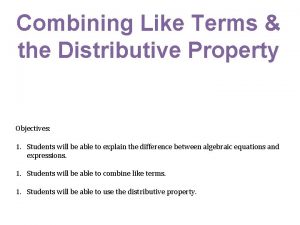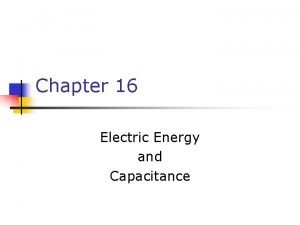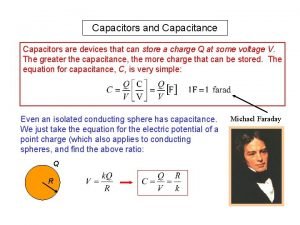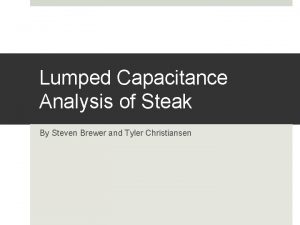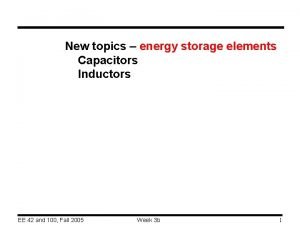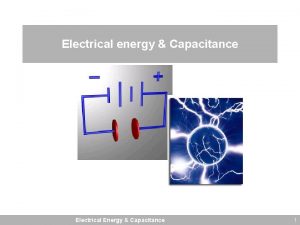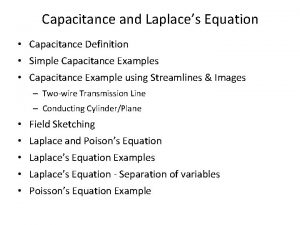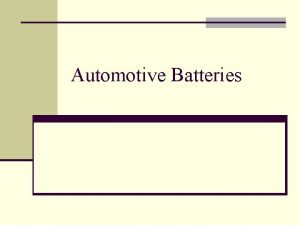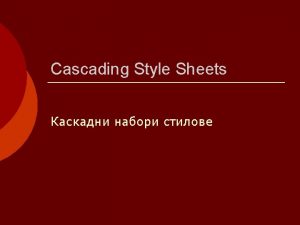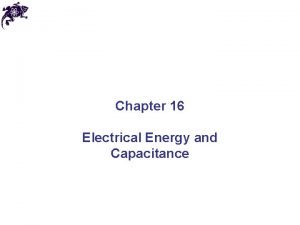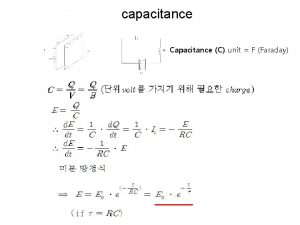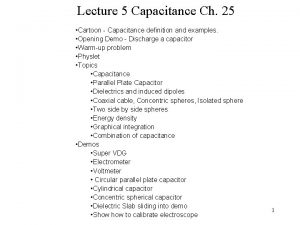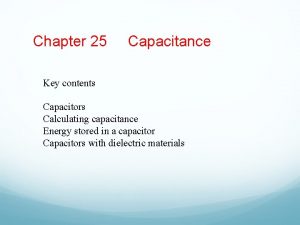Automotive Electrical Terms To Know Capacitance The property





















- Slides: 21

Automotive Electrical Terms To Know

Capacitance - The property of a capacitor or condenser that permits it to receive and retain an electrical charge.

Circuit – A source, resistance, and path to carry a flow from the source to the resistance and back to the source. An example is an electrical circuit. The wires (path) allow electricity from the batter (source) to flow to a headlamp (resistance) and back to the battery.

Conductor –Any material that can form a path for electrical current.

Voltage - the rate at which energy is drawn from a source that produces a flow of electricity in a circuit;

Ohms – Unit of measurement for resistance to the flow of electric current in a given unit or circuit.

Current – The movement of free electrons in a conductor

Resistance - The measure of opposition to electrical flow in a circuit.

Electromagnetism - The physics of the electromagnetic field: a field which exerts a force on particles that possess the property of electric

Electromotive force (EMF) - voltage: the rate at which energy is drawn from a source that produces a flow of electricity in a circuit; expressed in volts

Induction – The imparting of electricity to an object by magnetic fields.

Insulator - a material such as glass or porcelain with negligible electrical or thermal conductivity

Ohm’s law – Formula for computing unknown voltage, resistance, or current in a circuit by using two known factors to find the unknown value.

Amperage - the strength of an electrical current measured in amperes

Parallel circuit – An electrical circuit that has two or more resistance units wired so that current can flow through them at the same time.

Potential Energy - the mechanical energy that a body has by virtue of its position; stored energy

Semiconductors - A substance, such as silicon, that acts as a conductor or insulator, depending on its operating condition and application.

Series Circuit – A circuit with only one path for current to flow.

Series Parallel circuit – A circuit in which a series and parallel circuits are combined.

Valence ring - The outermost orbital ring of electrons in an atom.

Voltage drop – A lowering of circuit due to excessive lengths of wire, undersize wire, or through a resistance.
 Know history know self
Know history know self Dilan gorur
Dilan gorur I know who goes before me i know who stands behind
I know who goes before me i know who stands behind Electrician terms to know
Electrician terms to know Unit 1 introduction names and terms to know
Unit 1 introduction names and terms to know What comparable property underlies electrical forces?
What comparable property underlies electrical forces? Are thermal and electrical conductivity related
Are thermal and electrical conductivity related Polynomial classification
Polynomial classification Like terms in algebra
Like terms in algebra Like terms and distributive property
Like terms and distributive property Combine like terms property
Combine like terms property Combining like terms and distributive property jeopardy
Combining like terms and distributive property jeopardy Like terms distributive property
Like terms distributive property Combining like terms and distributive property calculator
Combining like terms and distributive property calculator Combining like terms and distributive property practice
Combining like terms and distributive property practice Coparcenary property and separate property
Coparcenary property and separate property Physical properties and chemical properties
Physical properties and chemical properties Commutative and associative properties
Commutative and associative properties How to solve capacitance
How to solve capacitance Potential energy of capacitor
Potential energy of capacitor Lumped capacitance model
Lumped capacitance model Capacitor and inductor
Capacitor and inductor




